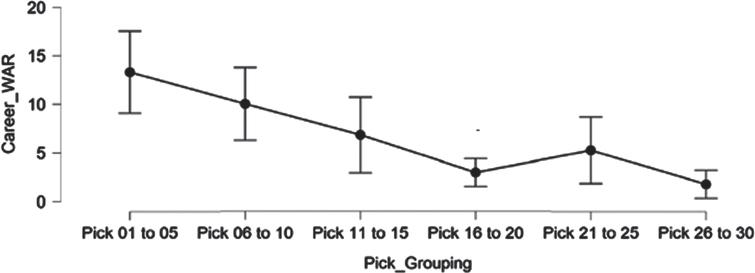
Quantifying Hope: Cubs Boast 10% Draft Lottery Odds After Dropping Series in Pittsburgh
It’s not going to be easy to catch Oakland, Cincinnati, or Washington for one of the top three draft lottery spots, but the Cubs are doing their damndest to make it happen. By dropping three of four to the Pirates, the Cubs have lost 15 of their last 19 and are now mere percentage points better than the Royals for the fourth-worst record in MLB. A trip to St. Louis could help to unlock that virtual tie, then the Cubs welcome the Reds for three games to close the month.
After that, they head into the All-Star break with a stretch of 16 games against five teams that are a combined 56 games over .500 as of Friday morning. Unfortunately for the front office, the schedule gets significantly easier the rest of the way. The Cubs are currently 19th in terms of remaining strength of schedule, a rank that is sure to drop following the gauntlet of the next three weeks.
Even worse, the A’s, Nats, Royals, and Reds all have tougher schedules ahead of them. But do those teams have the same desire to rebuild retool and by building up their prospect currency to the point where they can once again take advantage of all that absent big-market spending when the time is right? When it comes to pushing money into the middle, only the Nationals can be expected to carry a big payroll in the near future.
The other factor here is that the Cubs have more of an incentive to capitalize on the draft lottery now because they can’t participate in it twice in a row. Assuming they land a top-6 spot as part of the new system being implemented for the 2023 MLB Draft, they will be ineligible in 2024 as a revenue-sharing contributor. Now, we can all pick apart the logic in tanking to have slightly better odds to select a player with less certainty and a much longer impact timeline than in other professional sports, but every small advantage helps.
Adding to the nuance is that the Cubs are actually in a great spot with the No. 7 pick in this summer’s draft, which should see them select one of a number of excellent prep and college hitters. Seeing how things should work out for them in July, it may be hard to understand how moving up just one or two spots would merit any semblance of their current competitive strategy.
At the same time, you look at all the helium Cam Collier is getting and you start to see how a top-3 pick would have quite a bit of value. There’s also the notion that, while it’s still a big crapshoot, there are clear advantages to drafting as high as possible. Everything evens out once you get to the middle of the first round, but studies have shown that there are much higher odds for potential success with each 5-pick group from 1-15.

Just in case you read the caption above and wagged a finger at the date range, consider the amount of time it takes for draftees to either turn into MLB players or be written off. The article from which I borrowed this chart was put together in August of last year and published a little over three months ago, so it’s understandably discounting the last six years of data.
I have to wonder, however, whether rapid advances in the collection of data will change and/or improve the certainty of MLB draft picks. The proliferation of technology isn’t limited to the metrics you see on big leaguers, it’s also prevalent across college baseball and in various prep and youth tournaments. The depth of information available on these young baseball players is far greater than it was even five years ago, giving front offices more certainty (or at least less uncertainty).
So while I don’t like how the Cubs are going about this whole thing and I believe it’s embarrassing and dishonest to be presenting fans with an inferior product, I do believe there’s additional value in getting a higher draft pick. It’s okay to hate the strategy and disagree with the need to follow through with it while also understanding that it might work.

